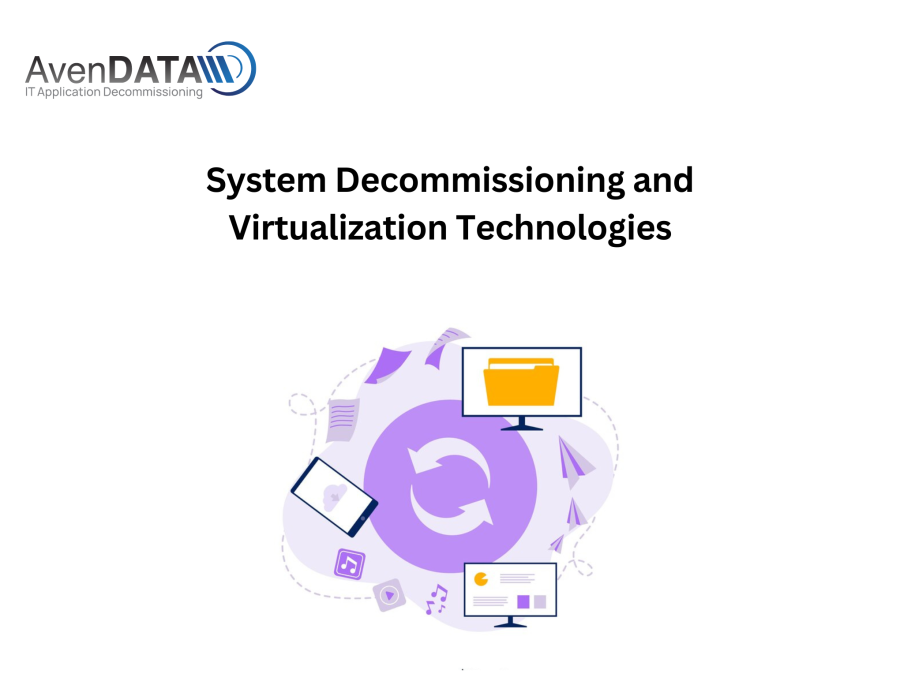Introduction: As technology evolves rapidly, organizations must adapt to keep pace with the changing IT landscape. System decommissioning and virtualization technologies have emerged as powerful strategies for streamlining IT infrastructure, reducing costs, and improving operational efficiency. This blog explores the benefits and considerations of system decommissioning and virtualization technologies, shedding light on how organizations can harness these approaches to optimize their IT environments.
System Decommissioning: Streamlining IT Infrastructure System decommissioning involves the retirement and removal of outdated or redundant IT systems from the organizational landscape. By eliminating unnecessary systems, organizations can achieve several benefits:
a. Cost Reduction: Decommissioning systems that are no longer in use or have become redundant allows organizations to reduce costs associated with maintenance, licensing, and infrastructure support. This reallocation of resources can be directed towards more strategic initiatives.
b. Simplified Operations: Removing obsolete systems simplifies IT operations, eliminating the need to manage and maintain outdated infrastructure. This streamlining allows IT teams to focus on more critical tasks and reduces the risk of potential security vulnerabilities.
c. Enhanced Security: Decommissioning systems that are no longer actively supported or updated reduces the risk of security breaches. Outdated systems are more vulnerable to attacks as they lack the latest security patches and updates. Removing these systems mitigates potential risks and strengthens overall security posture.
d. Improved Performance: By decommissioning unnecessary systems, organizations can optimize performance by reducing the burden on resources such as storage, processing power, and network bandwidth. This results in improved system performance and better overall user experience.
Virtualization Technologies: Efficient Resource Utilization Virtualization technologies, such as server virtualization and desktop virtualization, enable organizations to optimize resource utilization, improve scalability, and enhance flexibility:
a. Server Virtualization: Server virtualization allows multiple virtual servers to run on a single physical server, effectively consolidating hardware resources. This technology enables organizations to reduce the number of physical servers required, resulting in cost savings, energy efficiency, and simplified management.
b. Desktop Virtualization: Desktop virtualization separates the desktop environment from the physical machine, allowing users to access their desktops remotely. This technology provides flexibility, as users can access their desktops from any device, enhances security by centralizing data storage, and simplifies software deployment and management.
c. Storage Virtualization: Storage virtualization abstracts physical storage resources, allowing for centralized management and increased flexibility. This technology simplifies storage provisioning, improves data availability, and optimizes storage utilization by pooling resources across multiple storage devices.
d. Network Virtualization: Network virtualization abstracts network resources, enabling organizations to create virtual networks that are independent of the physical infrastructure. This technology enhances network agility, simplifies network management, and enables the efficient provisioning of network services.
Considerations and Best Practices: When implementing system decommissioning and virtualization technologies, organizations should consider the following:
a. Comprehensive Planning: Develop a comprehensive plan that includes an inventory of existing systems, a prioritization framework for decommissioning, and a roadmap for virtualization implementation. This planning ensures a systematic and efficient approach to the transformation process.
b. Data Migration and Retention: When decommissioning systems, organizations must carefully plan data migration and retention strategies. Ensure data integrity during the migration process and adhere to legal and compliance requirements for data retention.
c. Performance and Scalability: Assess performance requirements and scalability needs before implementing virtualization technologies. Adequate resource allocation and capacity planning are crucial to ensure optimal performance and accommodate future growth.
d. Security and Compliance: As organizations transition to virtualized environments, security and compliance measures must be a top priority. Implement robust security controls, regularly update software, and adhere to industry regulations to protect data and mitigate risks.
Conclusion: System decommissioning and virtualization technologies offer organizations the opportunity to streamline IT infrastructure, reduce costs, and enhance operational efficiency. By removing redundant systems, organizations can optimize resource utilization, improve security, and simplify IT operations. Virtualization technologies further enhance efficiency by consolidating resources, improving scalability, and providing flexibility. However, careful planning, data migration strategies, performance considerations, and security measures are vital for successful implementation. Embrace the power of system decommissioning and virtualization technologies, and unlock the full potential of your IT infrastructure.
#AvenDATA #systemdecommissioning #itdecommissioning #decommissioning #legacydata






Comments